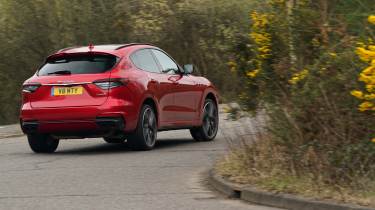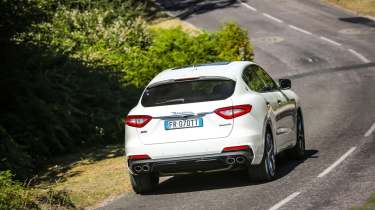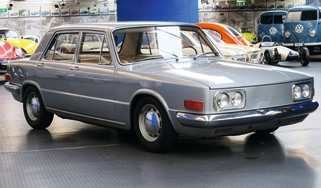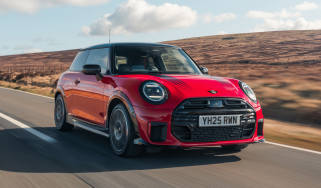Maserati Levante (2016 - 2024) – ride and handling
Hydraulic power steering, rear biased all-wheel drive and an unexpected level of poise help the Maserati challenge the best-in-class for handling. Ride is also well judged thanks to standard air suspension
With big claims made for a class leading blend of ride and handling the Levante has much to live-up to. Initial impressions are really encouraging, with a palpable sense of structural rigidity, smooth, well-judged steering response (from a hydraulic power-assisted rack) that’s quick-witted without feeling overly sharp, and damping that connects you to the road but isolates you from the bumps. Above all it hides its size and weight (2205kg for the diesel) admirably.
The ride is firm in Trofeo form, and while there is a certain level of pliancy from the air springs it does have a tendency to crash into sharper intrusions. It also loves to tramline and be pulled into ruts – plus there’s an almost hilarious amount of scrub from the front axle when on full lock. But as speeds rise the wheels seem to find equilibrium with the road surface, and while the Trofeo is never as delicate over bumps as a properly sorted performance saloon or estate, it’s actually quite impressive for a top-heavy SUV.
> Maserati Ghibli (2013 - 2023) review – Italy's answer to the BMW 5-series
Push along the road at a decent lick and the body control stays tight, which is when the steering wakes up with extra weight and feel, allowing you to use the relatively fast ratio of the rack to load the chassis with a surprising amount of confidence. This is also when the engine starts to really come alive, its deep well of torque overriding the initial flatness, exaggerated by the long travel pedal response, and revealing an inherent aggression it has reserved for the upper reaches of its operating window. It really is a superb engine, never left wanting when in the mid-range and more than happy to rev right up to its 7100rpm red line.
Start to really exercise the powertrain, though, and the Levante’s structure starts to groan under the forces at play. Despite its saloon-based underpinnings, the structure lacks the outright stiffness across both axles to properly handle so much grunt. The steering rack’s usually crisp responses start to blur and feedback turns into noise as the rack shudders over bumps. The rear axle isn’t any more secure, and while traction isn’t so much an issue, any slip at the rear end that does manifest itself feels uncouth.
The Trofeo model doesn’t feature any bespoke hardware from its lesser siblings, but does have a new ‘Corsa’ driving mode which includes its own throttle mapping, rear differential and transmission calibrations, a firmer setting for the dampers, and a slightly heavier steering rack. Go looking for structural upgrades such as strut braces, shear plates or active anti-roll bars and you’ll also come back empty-handed.




